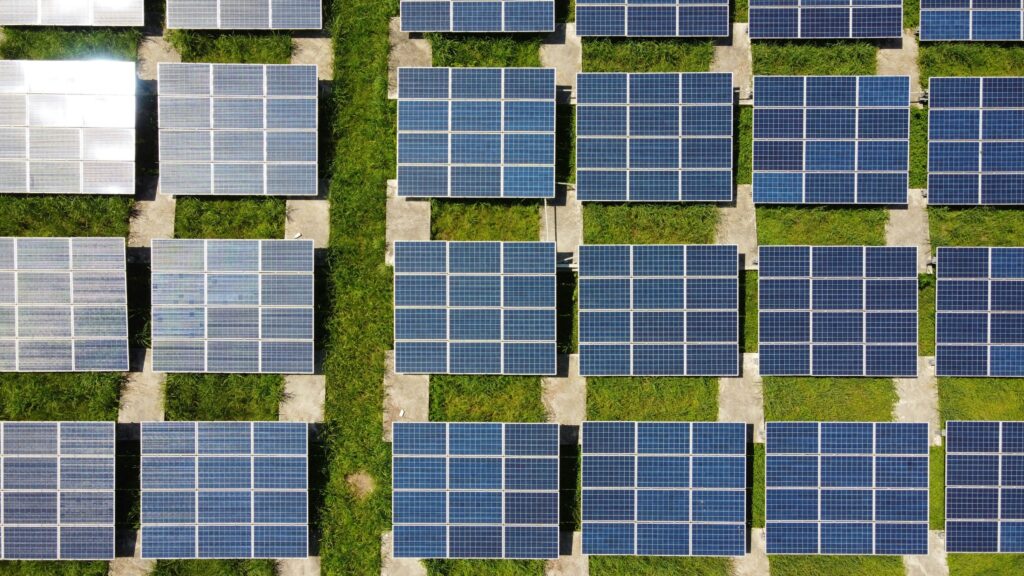Bloom Energy Corporation (NYSE:BE) is a leading American clean energy company headquartered in San Jose, California, that specializes in solid oxide fuel cell (SOFC) technology designed to provide on-site, efficient, and low-carbon electricity generation for a wide range of commercial, industrial, and utility-scale applications. Founded in 2001 by Dr. K.R. Sridhar, a former NASA scientist who worked on developing technologies for Mars missions, Bloom Energy began as a bold vision to revolutionize the way the world produces and consumes power. The company’s foundational technology was originally conceived to generate life-supporting oxygen on Mars before being adapted for Earth-based energy solutions that minimize dependence on the traditional power grid. Over the past two decades, Bloom Energy has evolved into one of the most innovative clean-tech enterprises in the United States, recognized for its solid oxide platform that converts fuel such as natural gas, biogas, or hydrogen into electricity through a highly efficient electrochemical process without combustion, thereby reducing greenhouse gas emissions and improving energy reliability.
Bloom Energy’s business model is centered on providing resilient, sustainable, and distributed energy systems to major corporations, data centers, hospitals, and government facilities seeking cleaner power alternatives. Its flagship product, the Bloom Energy Server, is a modular fuel cell system that can deliver reliable on-site electricity while significantly reducing the carbon footprint compared to conventional fossil fuel-based generation. The system is designed for scalability and flexibility, enabling customers to transition toward net-zero goals by integrating renewable fuels and hydrogen as the global energy landscape evolves. The company has forged long-term partnerships with major technology and industrial clients, including Google, Walmart, FedEx, and NASA, positioning itself as a trusted power solutions provider for critical infrastructure and digital economy applications. Its growing role in powering next-generation data centers and artificial intelligence workloads has also expanded its appeal among investors looking for exposure to both clean energy and AI-driven industrial growth.
ARTICLE HIGHLIGHT: Tony Zhou of Waton Financial (WTF) Unveils “InfoMan” AI Agent at New Fortune Annual Meeting in Guangzhou.
In recent years, Bloom Energy has made significant strides toward developing a hydrogen ecosystem, leveraging its solid oxide platform for both electricity generation and hydrogen production. Its Bloom Electrolyzer enables efficient hydrogen generation using renewable energy, allowing for a cleaner and more cost-effective pathway to decarbonization in industrial sectors. The company’s expansion into hydrogen fuel technology, alongside its continuous innovation in high-temperature electrolysis, reflects a strategic shift toward becoming a major player in the emerging hydrogen economy. This move aligns Bloom Energy with global energy transition initiatives as governments and corporations accelerate investment in carbon reduction technologies.
Financially, Bloom Energy has experienced rapid growth, reporting more than $519 million in quarterly revenue in 2025 and achieving record year-over-year gains of 57.1%. Despite thin profit margins, the company’s expanding global presence and improving economies of scale have fueled optimism among investors and analysts. With a market capitalization nearing $30 billion and institutional ownership exceeding 77%, Bloom Energy has attracted strong interest from major funds and asset managers such as Goldman Sachs, Voya, and Nuveen. Its growth trajectory has also been reinforced by a surge in demand for clean, reliable energy solutions in AI data centers, where consistent power supply is critical for large-scale computing infrastructure. The company’s robust R&D investments, proprietary technology, and steady expansion of manufacturing capacity place it among the leading innovators in the renewable and distributed energy sector.
Today, Bloom Energy stands at the intersection of sustainability, technology, and industrial transformation. Its mission to “make clean, reliable, and affordable energy for everyone” continues to drive its global strategy as it navigates the accelerating transition to renewable and hydrogen-powered energy systems. By focusing on fuel flexibility, scalability, and real-time power reliability, Bloom Energy is redefining what it means to deliver energy security in an increasingly electrified and interconnected world. With a blend of scientific innovation, strategic partnerships, and growing global demand, Bloom Energy remains a pivotal force shaping the future of clean energy and decentralized power generation.
A High-Flying Clean Energy Stock With Growing Red Flags
Bloom Energy Corporation (NYSE:BE) has recently captured Wall Street’s attention amid its remarkable rally and rising institutional ownership. With its stock trading at $126.80 as of mid-November 2025—up nearly tenfold from its 52-week low of $12.78—the company has been hailed as a green energy success story. However, behind the impressive headlines lies a growing list of concerns that raise serious questions about its long-term valuation, financial health, and ability to sustain its growth trajectory. While institutional investors like Resona Asset Management Co. Ltd., Tree Line Advisors, and Goldman Sachs Group Inc. have increased their positions, a closer look suggests that Bloom’s fundamentals may not justify its sky-high market capitalization of $29.99 billion and P/E ratio of 705.94.

CHECK THIS OUT: Above Food (ABVE) to Issue 1.1 Billion New Shares in Merger and Perpetua Resources (PPTA) Soars 171% as U.S. Approves $1.3B Gold-Antimony Mine.
Unsustainable Valuation Amid Limited Profitability
At a P/E ratio north of 700 and a PEG ratio of 71.60, Bloom Energy is priced for perfection in an industry that remains highly volatile and capital-intensive. The company’s return on equity (ROE) of 8.74% and net margin of just 0.84% reveal that profitability is still razor-thin despite record revenues. While Bloom reported $519.05 million in revenue in Q3 2025, up 57.1% year-over-year, it earned only $0.15 per share, compared to a loss of $0.01 in the same quarter last year. This narrow profit margin underscores the inherent fragility of its business model—where massive revenue growth doesn’t necessarily translate into sustainable earnings.
Analysts across the board are beginning to temper expectations. The consensus 12-month price target now sits around $95.65, well below the current trading level, indicating skepticism over the company’s valuation. A “Hold” consensus rating—based on 25 analyst reviews, including 3 “Sell” recommendations—suggests that institutional enthusiasm may be waning as investors re-evaluate Bloom’s fundamentals versus its hype-driven momentum.
Heavy Institutional Buying Doesn’t Guarantee Safety
Bloom Energy’s recent institutional buying spree paints a misleading picture of strength. Major funds like Tree Line Advisors Hong Kong Ltd., Driehaus Capital Management, Voya, and Goldman Sachs collectively increased their exposure, driving institutional ownership to a lofty 77.04%. While this inflow might appear bullish, history shows that institutional buying often peaks before corrections in overvalued momentum stocks. In fact, many of these positions were established when the stock traded below $60, meaning smart money could soon begin to trim exposure to lock in substantial gains.
Furthermore, insider activity suggests executives themselves may be cashing out near the top. Notably, insider Shawn Marie Soderberg sold 36,666 shares at an average price of $141, totaling $5.17 million, while Director Jim H. Snabe sold 20,000 shares at $143.04, realizing $2.86 million. In total, insiders sold 332,065 shares worth $26.67 million in just 90 days—hardly a sign of internal confidence. Despite public optimism, insider behavior indicates management may view the current valuation as unsustainably high.
Mounting Financial Risk and Leverage Concerns
Beneath Bloom Energy’s clean energy narrative lies a worrying debt structure. The company’s debt-to-equity ratio of 1.98 highlights its heavy reliance on borrowed capital to fund operations, expansion, and R&D. This leverage poses significant risk in a rising-rate environment, especially given Bloom’s limited free cash flow and low net margin. Its current ratio of 4.40 and quick ratio of 2.88 indicate short-term liquidity, but these numbers are heavily supported by receivables and inventory rather than organic cash generation.
The company’s aggressive capital expenditures—driven by the need to scale its solid oxide fuel cell (SOFC) systems—make it vulnerable to margin compression and rising costs. While Bloom’s technology promises energy efficiency and grid independence, its manufacturing process remains expensive, and its dependency on natural gas undermines its classification as a truly renewable energy company. If governments tighten clean-energy tax credit eligibility or if fuel costs rise, Bloom’s cost structure could become unsustainable.
Overreliance on AI and Data Center Hype
Bloom Energy’s recent rally has been fueled by its narrative of providing clean, reliable energy for AI and data center operations. While partnerships with major firms like Oracle have boosted investor enthusiasm, the practical impact of these deals remains uncertain. The AI-driven data center expansion that Bloom is banking on may not scale as fast as expected, especially as hyperscalers pursue alternative energy solutions, including direct grid expansion and microgrid solar-hybrid systems.
Moreover, Bloom’s core fuel cell technology, while efficient, is not yet fully green—relying primarily on natural gas reformation to generate hydrogen. This exposes the company to criticism from environmental purists and policymakers who favor zero-emission solutions. Without rapid innovation toward renewable hydrogen or carbon capture integration, Bloom’s technology could face obsolescence as governments move toward stricter decarbonization mandates.
Market Euphoria and Analyst Contradictions
The disconnect between Bloom’s financial reality and its market hype has become increasingly apparent. Although firms like BMO Capital Markets and JPMorgan have issued high target prices of $136 and $129, respectively, the underlying justification appears thin. Both banks cite “AI infrastructure potential” and “market penetration opportunities” rather than proven earnings growth or margin expansion. This reliance on speculative projections creates a valuation bubble vulnerable to deflation once the hype cycle fades.
Meanwhile, Zacks Research recently downgraded Bloom from “Strong Buy” to “Hold,” and TD Cowen’s “Hold” rating with a target of $105 further reinforces skepticism. When 25 analysts collectively average a “Hold” rating with targets below the current share price, it signals that optimism has likely peaked.
Insider Selling and Volatility Could Trigger a Correction
With a beta of 3.43, Bloom Energy is one of the most volatile stocks in the clean-energy sector, prone to wild swings driven by sentiment rather than fundamentals. The combination of insider selling, inflated valuation, and thin margins suggests the stock could face a severe correction if investor confidence wanes. The company’s 52-week range—from $12.78 to $147.86—illustrates how quickly speculative capital can drive prices up, and just as swiftly, drive them down.
If earnings disappoint in the next quarter or revenue growth slows below 50%, the market could reprice Bloom closer to its fair value, which analysts peg around $90–$100. The risk-reward balance is becoming increasingly unfavorable, especially given the broader clean energy sector’s volatility amid policy and interest-rate uncertainty.
The Bottom Line: Bloom Energy (BE) Faces a Reality Check
Bloom Energy Corporation’s meteoric rise may not be built on a sustainable foundation. Despite strong institutional ownership, bullish analyst targets, and impressive year-over-year revenue growth, the company’s sky-high valuation, limited profitability, insider selling, and leverage risks paint a far less rosy picture. Its dependence on speculative AI energy demand and incomplete transition toward full renewable integration further compound long-term uncertainty.
While Bloom’s technology may have potential, its financials suggest that investors are paying a premium far beyond what its fundamentals support. As euphoria fades and the market shifts focus from growth to profitability, Bloom Energy (NYSE: BE) could face significant downside pressure—making it a cautionary tale for investors chasing the next clean-energy boom without examining the risks beneath the surface.
READ ALSO: NioCorp (NB)’s $1.14B Elk Creek Project Set to Transform U.S. Critical Minerals Supply and Endeavour (EXK) Poised to Double Output With Kolpa and Terronera Expansion.






